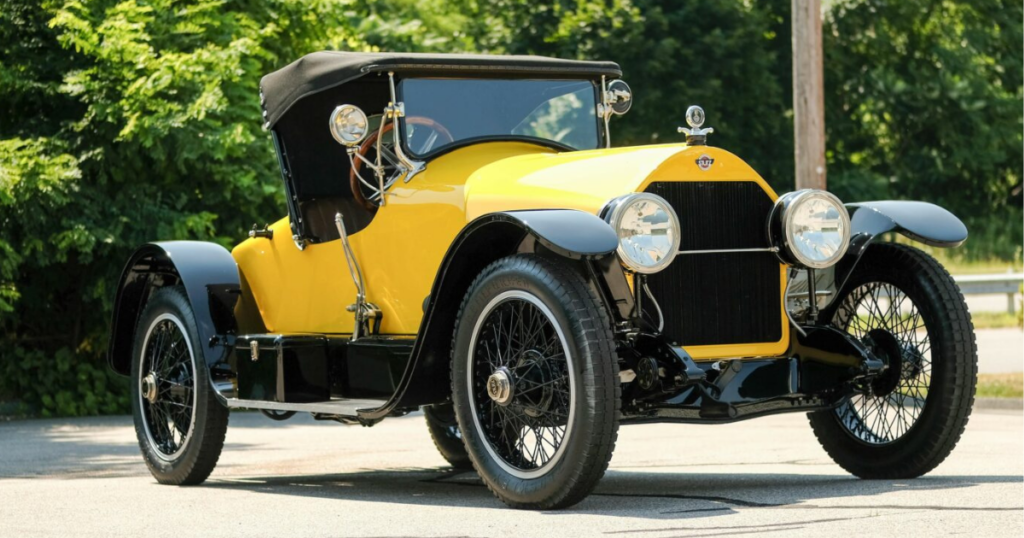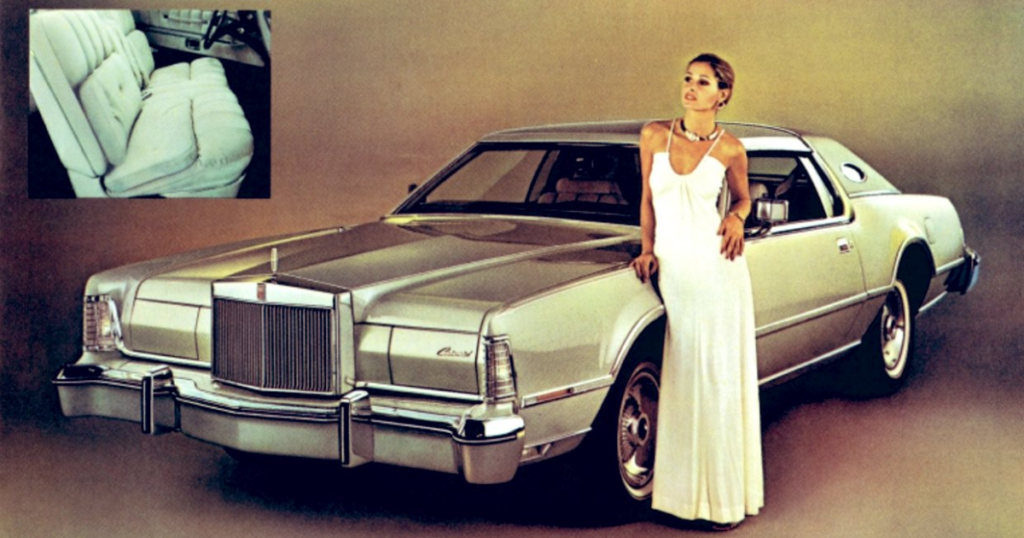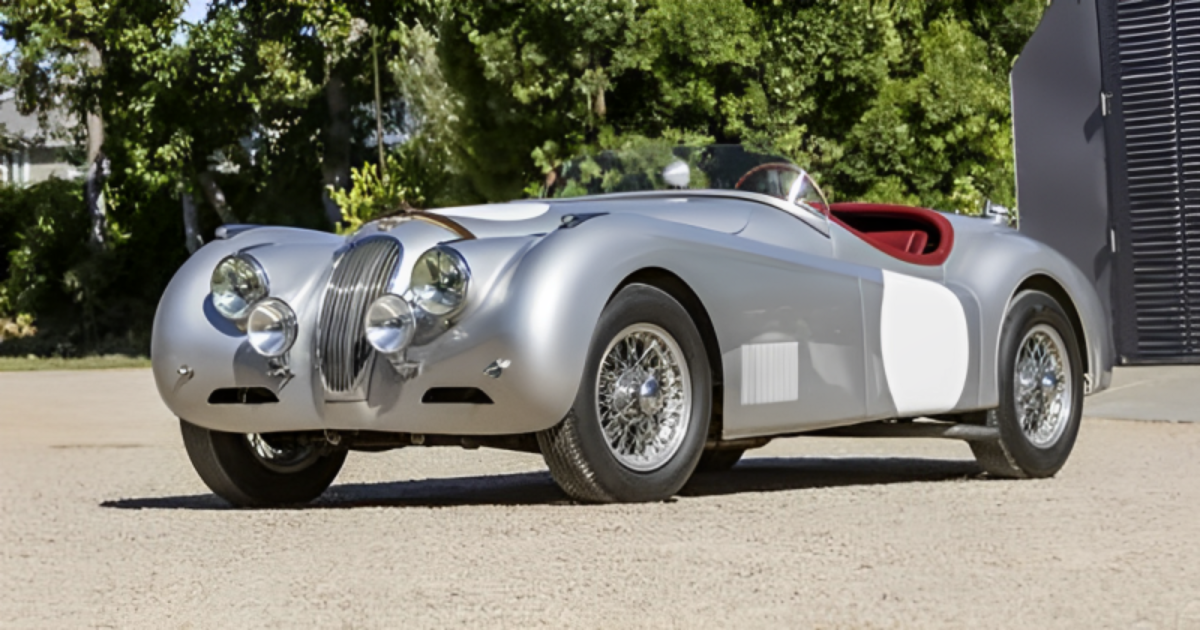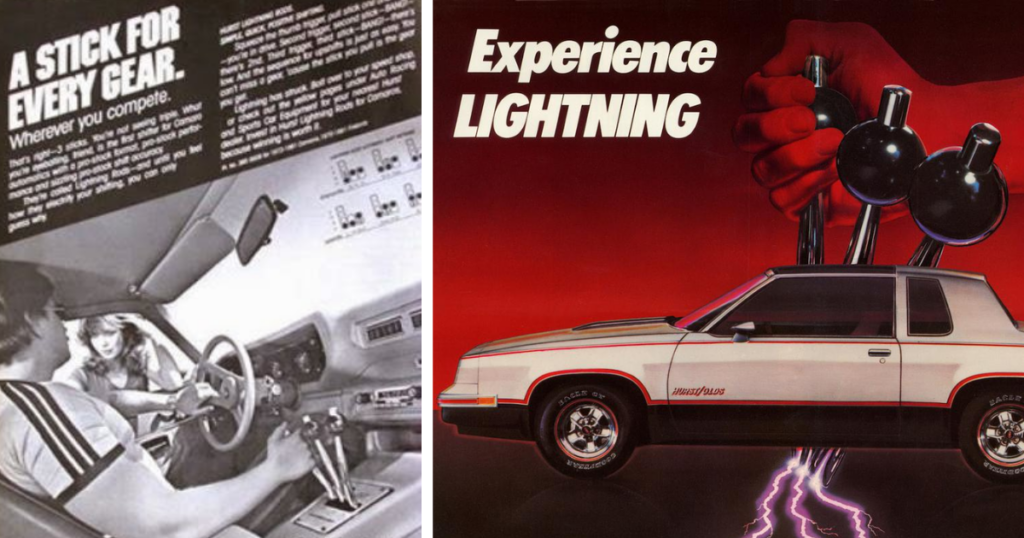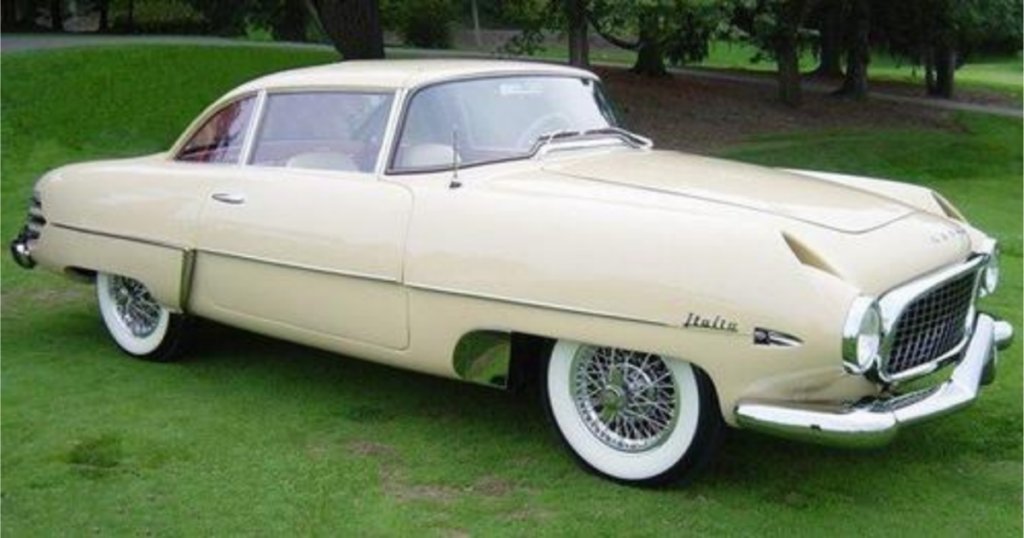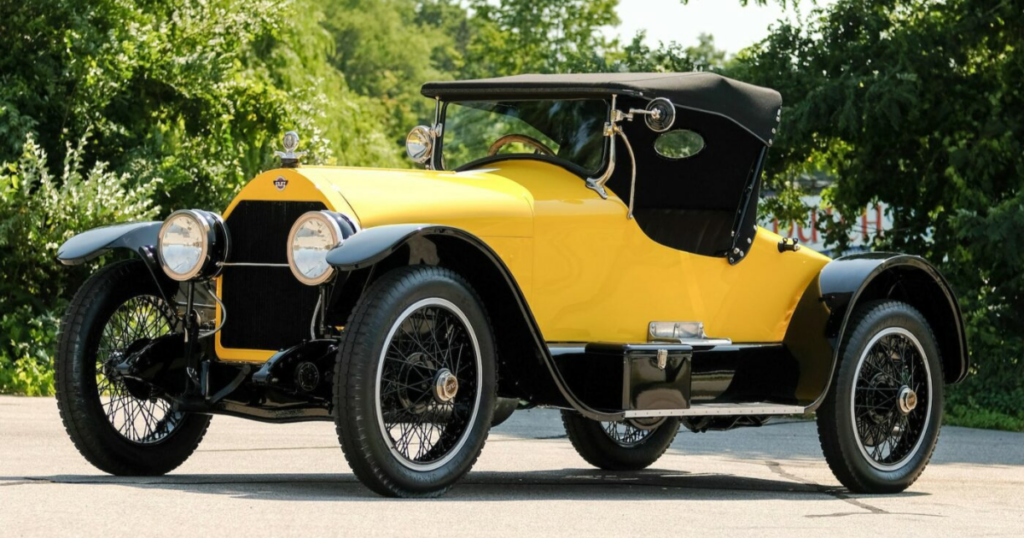
Since its inception, the Stutz Company and its Bearcat model have achieved instant fame. Shortly after completion, Harry C. Stutz entered the prototype Bearcat racer into the 1911 inaugural Indianapolis 500 race. Despite being untested, the car performed exceptionally well, surpassing many established brands and earning Stutz the memorable slogan, “The Car That Made Good in a Day.”
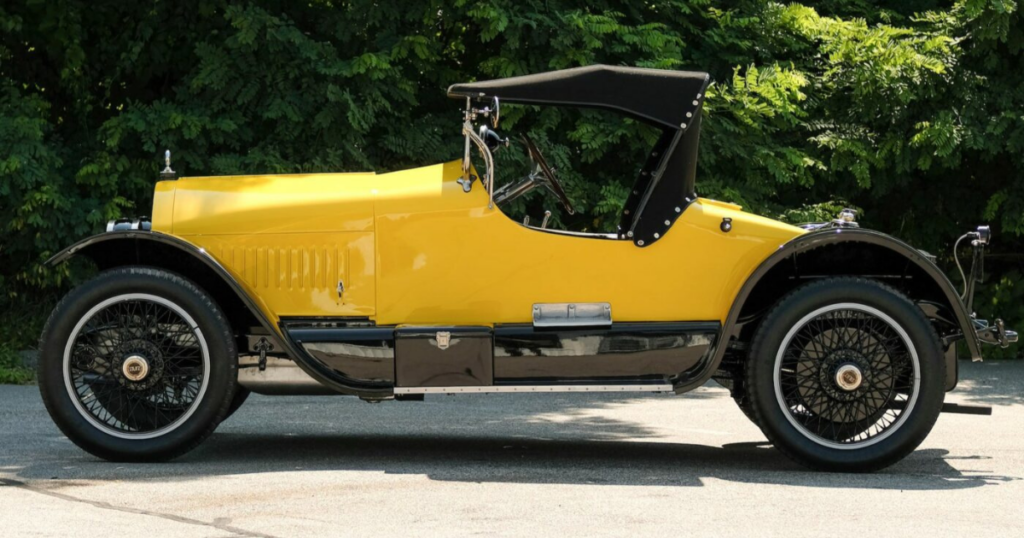
Introduced to the public in 1912, the Bearcat essentially served as a road-worthy iteration of the highly successful Stutz racers that followed the original Indy car. Exemplifying radical sports car design, the Bearcat featured only two bucket seats and lacked a convertible top or windshield. Following the tradition of Stutz racing cars, the Bearcat boasted a construction centered around a low-slung chassis, ensuring a lower center of gravity and excellent handling, complementing its lightweight design.
Initially equipped with a Wisconsin T-head engine, the Bearcat eventually adopted a Stutz-built, sixteen-valve, four-cylinder unit that drew heavily from Stutz’s racing expertise. The Stutz “White Squadron” racers, powered by engines with four valves per cylinder, highlighted the significant performance improvement over traditional two-valve motors.

The introduction of the more advanced motor prompted Stutz to enhance the car accordingly. Responding to the increased power, Stutz introduced a sturdier chassis and attractive modern coachwork. While still based on a short and light 120″ chassis, the new model lowered the center of gravity further by placing the tank down low in the rear, accompanied by a rear deck designed to hold a couple of raked spares in a racing fashion. This redesign resulted in a visually imposing machine and ushered in the Bearcat’s second golden era. In competition with its formidable rival, the Mercer Raceabout, the Bearcat stood as the epitome of American sporting cars of its time.
